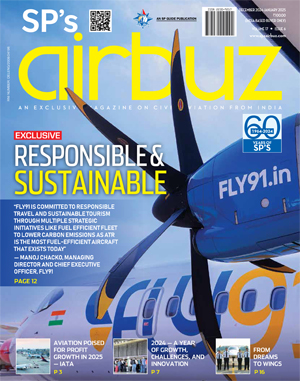A Win-Win Situation

AIE is turning to the IAF to source 25 experienced pilots per year who have the potential to be trained as commanders in a short span of time. For the airline and the IAF, the winds of change are blowing in the right direction.
Established in 2005, Air India Express (AIE), the low-cost arm of Air India operating on international routes primarily to the Middle East, came into limelight in a somewhat jarring fashion on May 22, 2010, when its Flight 812 from Dubai while landing at Mangalore airport in the wee hours of the morning, overshot the runway and crashed into the valley beyond. Of the 166 on board, 158 perished in the crash. The disaster was attributed to catastrophic bungling between a sleep-inertia ridden commander, Captain Glusica, an expatriate pilot of Serbian origin with over 10,000 hours of flying and a diffident First Officer H.S. Ahluwalia, a former employee of Jet Airways who had over 3,600 hours of flying experience. Ahluwalia was slated for command in the near future.
Beginning with a fleet of 25 Boeing 737-800 aircraft in 2005, the airline is down to 21, of which the 17 that are airworthy, operate 195 flights per week. Financially, the airline’s performance had peaked in 2009 but has been in decline since then in tandem with its parent Air India, a malaise attributable largely to mismanagement at the corporate level. The appointment of Captain Pawan Arora as Chief Executive Officer (CEO) last year had generated an ugly controversy on account of which under direction from the Ministry of Civil Aviation he had to be eased out. In his place, S. Chandrakumar of Air India was appointed as the Chief Operating Officer (COO) of AIE in the end of February this year. Another anomaly that has been corrected is the relocation of its headquarters from Mumbai to Kochi. This was a long felt need as bulk of the flights operate from the three airports the Cochin International Airport at Nedumbassery Kochi, Thiruvananthapuram and Kozhikode in Kerala as also Mangalore airport in neighbouring Karnataka. Operations from the southern region provide 90 per cent of the market share. The airline expects to receive 40 new aircraft in the next three years. Although there are plans to introduce operations in the domestic sector, the airline will continue to focus primarily on international routes. With a business model that appears superior to that of Air India, AIE hopes to break even by 2013. Currently, under the new COO, the carrier is undergoing a restructuring plan which is a part of the overall turnaround plan for Air India.
But the plans for expansion could encounter a serious impediment by way of shortage of experienced commanders. The airline had inducted a large number of expatriate pilots from Europe and Mexico to fly as commanders but most have quit. Under the new terms of contract wherein their salary is subject to tax in India, expatriate pilots no longer find employment with airlines in India worthwhile. Besides, expatriate pilots are now required to face medical board in India, a practice that was not in vogue earlier. The Indian system of medical examination for pilots is known to be stringent and many expatriate pilots who are advanced in age fear being found medically unfit leading to removal from flying duties and consequently losing their job. These two factors appear to have proved to be powerful deterrents for expatriate pilots seeking positions with airlines in India and their numbers have dropped sharply in recent times and continue to diminish as more and more expatriate pilots fail to renew their contract. The Directorate General of Civil Aviation has also been pressurising the airlines to phase out expatriate pilots the cut off date for which has now been shifted to 2013. Shortage of experienced pilots to be recruited as commanders looms large on the horizon and is bound to adversely impact the airline’s plans for expansion.





